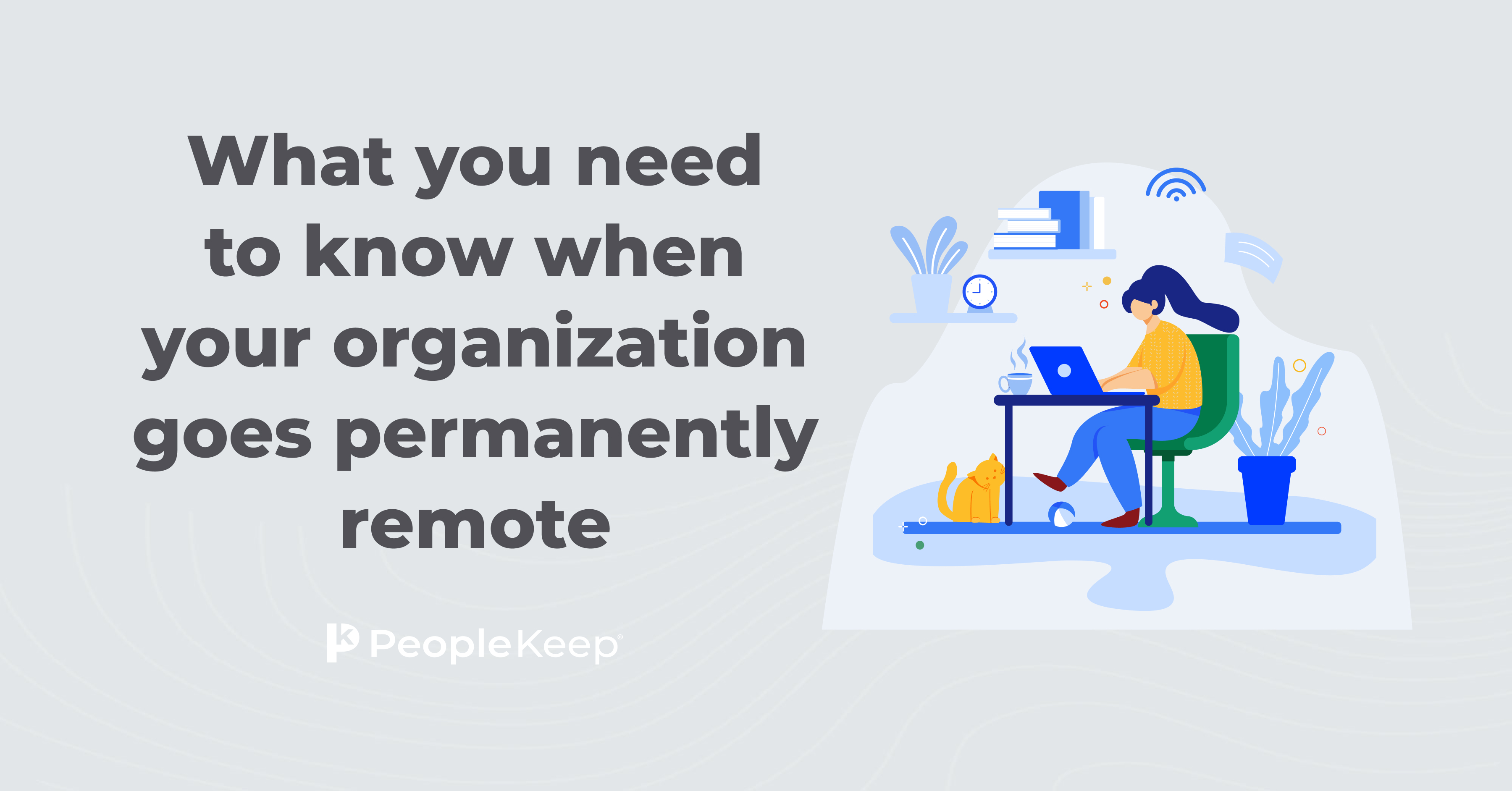What is an employee census?
By Elizabeth Walker on February 14, 2024 at 8:53 AM
With the cost of medical care rising nationwide, employers want budget-friendly health benefits more than ever. To provide you with a more accurate quote, many insurance companies and brokers will ask you for a report on the demographics of your workforce—also known as an employee census.
Providing an employee census will help you receive the right benefits at the best premium rates possible. Even beyond securing employee benefits, completing an annual census may also be necessary to help you fulfill certain compliance and tax obligations, so proper data collection is essential.
In this article, we’ll go over an employee census, why it’s important, and how you can create one at your organization.
Takeaways from this blog post:
- An employee census is a report containing specific data about workers within a company. Conducting an annual employee census helps you select the right benefits and perks for your organization. It’s also essential for completing annual compliance and tax obligations.
- The census includes all eligible employees who received payroll during a selected period, including part-time employees and those who didn't participate in certain benefits.
- Employers can use HR or payroll software to collect data for an employee census, and different benefits may require specific census data. The accuracy of your census is crucial to determine compliance requirements and avoid penalties.
What is an employee census?
An employee census is a report that contains specific demographic data about each employee within an organization. Employers often use the census to create a snapshot of their employee population to meet compliance regulations and receive benefit quotes from insurers and other plan service providers.
Employee census reports are comprehensive. The specific data they contain can depend on what the insurance company, benefit plan provider, or law requires. However, most employee censuses at least contain basic information regarding workplace demographics.
Why is an employee census important?
A significant advantage of compiling an accurate employee census report is that it helps you choose the right benefits and perks for your organization. According to a PeopleKeep survey, 82% of employees say their benefits package is crucial when accepting a job. Therefore, offering the right benefits can go a long way toward recruiting and retaining workers in a competitive job market.
Other reasons for collecting employee census data include the following:
- Targeting the right health benefits, retirement plans, and other perks based on your workforce’s unique needs.
- You can receive more accurate premium quotes and plan renewal rates by providing insurers, agents, and brokers with specific information about your employees.
- HR and payroll teams use census data to create company employee accounts for compliance purposes and benefit applications.
- Tracking family status, dependents, age, and employment length can help determine employee eligibility and contribution limits for certain benefits, like health reimbursement arrangements (HRAs).
- Insurers use salary data to process workers’ compensation claims efficiently.
- When offering benefits, a census can help you complete your annual compliance and nondiscrimination testing obligations.
- Updated employee information helps you complete relevant tax forms, such as Form 1094-C and Form 1095-C, to fulfill Affordable Care Act (ACA) requirements.
- These forms often require employee demographics, employer information, and other health coverage details.
While it may seem time-consuming, having an employee census file is essential to running your business. Even if you’re only compiling a report for compliance reasons in case of an audit, it’s vital to have a complete and accurate census of your workforce at all times.
What should you include in an employee census?
Depending on what benefits you’re considering, your employee census will contain varied information. However, the more accurate and detailed your census is, the more precise quotes you’ll receive.
An effective employee census contains the following basic information:
- Employee demographics
- As mentioned above, this includes the employee’s name, SSN, employee identification number, age, gender, home and mailing addresses, phone numbers, email address, and union status. Some plans may ask you to include their race, ethnicity, and preferred language.
- To determine eligibility and clarify waiting periods, you should include the date of hire, employee status (i.e., exempt or non-exempt), employment type (i.e., full-time or part-time), and job title. If you terminated an employee and rehired them, you should also list their original hire, termination, and rehire dates.
- Employee dependent information
- This includes the dependent’s names, SSNs, relationship to the employee, number and type of dependent (i.e., spouse, child, etc.), and the type of benefits they’re eligible to receive.
- ZIP code
- This is especially important to determine geographically based premium rates for group health plans.
- Annual compensation amount for compliance testing
- Employee and employer match contribution amounts for each benefit
- You should also include this information in the benefit’s summary plan description and any other relevant plan documents.
- The benefits the employee wants to participate in (i.e., medical, dental, vision, retirement)
- Depending on what benefits they select, you may need to include more detailed information for that specific plan.
- Whether the employee will waive coverage
- Health insurance companies need to know how many employees are waiving coverage to determine if you meet their participation requirements, which is typically 70%.
Your census should also include information about your business. This includes your company name, ZIP code, type of business, contact information, requested benefit effective dates, how many employees you want to enroll, and current and prior carrier information.
Who should you include in your employee census?
Your census must include all employees who worked at your company and received payroll during a selected period—whether that be a plan year or a fiscal company year. This includes part-time employees, those who weren’t eligible or chose not to participate in a particular benefit, and individuals who only worked at your company for a brief time.
You should also include any employees employed by any companies related to your business. Depending on the aggregate number of employees in this count, you could be a controlled group subject to specific compliance requirements, like the employer mandate. So, having the most accurate information possible is important to avoid any penalties.
If you terminated and rehired an employee later in the year—like a seasonal employee—include them as well, in addition to their termination and rehire dates and total work hours. Some insurers and plan administrators need this information to determine employee eligibility. You may also need to include these workers in your full-time equivalent employee (FTE) calculation to determine if you’re an applicable large employer (ALE).
How can employers collect data for an employee census?
Suppose you’re using HR or payroll software. In that case, you can typically run and download a report containing general data—like workplace demographics—needed for a specific period to complete an employee census. This could include information you received upon your employees’ dates of hire.
Your HR team or benefits specialist should also have benefits information, like an employee’s family status, dependents, selected benefits, contribution amounts, and more that you can pull.
Remember, different benefits and plans require different census data. So, if you’re compiling a census for a specific plan, work directly with the plan vendor to determine what specifics they need to generate a unique quote for your company.
For example, some insurance agents and brokers will supply you with their own census questionnaires to help them determine what products and rates your company is eligible for. If they request certain information you don’t have in your payroll or HR systems, you can survey your employees to request the missing data you need.
What information your census will reflect depends on the plan year of your chosen benefit. For example, if a plan follows a calendar year, the census should show information for active employees from January 1 to December 31. If you’re running a report using HR and payroll software, you can choose what dates you want to pull data from before downloading the file.
If you’re collecting census data for compliance or tax purposes, ensure you keep it accurately updated by running it annually.
Conclusion
Providing a detailed employee census file to insurers, brokers, and other vendors who request it will help you design a benefits package to meet your workforce’s specific needs at an affordable price. Having this information on hand will also help you avoid compliance issues and accurately fill out required tax forms at the end of the year.
Assembling an employee census can be complex. To be sure your census is error-free, work with your HR and payroll teams to ensure all relevant information is accurate and updated annually as your workforce changes.
This article is intended for general informational purposes only. PeopleKeep doesn’t provide tax or legal advice. You should consult with an attorney or advisor to determine your reporting requirements.
Check out more resources
See these related articles

What is the employee life cycle?
Understanding the employee life cycle is crucial for HR teams. Dive into this guide to gain insights on each stage and optimize your management strategies.

How to create a careers page that attracts top candidates
Looking to attract top talent? Discover the secrets to creating a careers page that stands out and grabs the attention of qualified candidates.

What you need to know when your organization goes permanently remote
Going permanently remote? Get ready with this comprehensive guide that covers everything you need to know about transitioning your organization to remote work.



